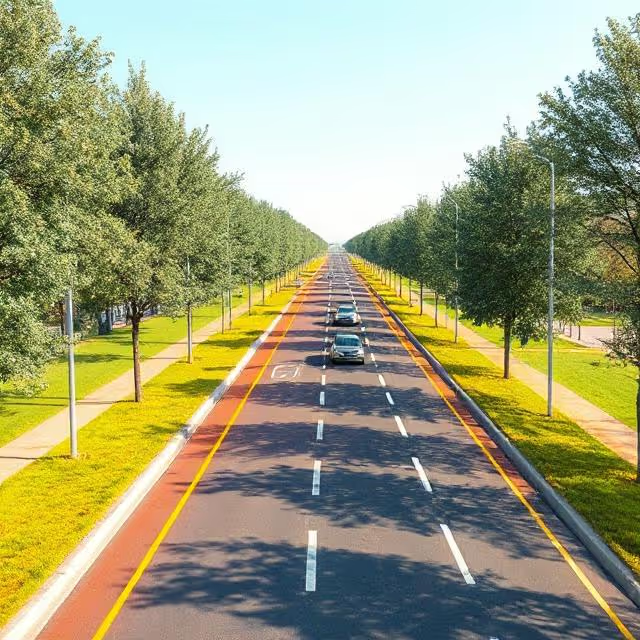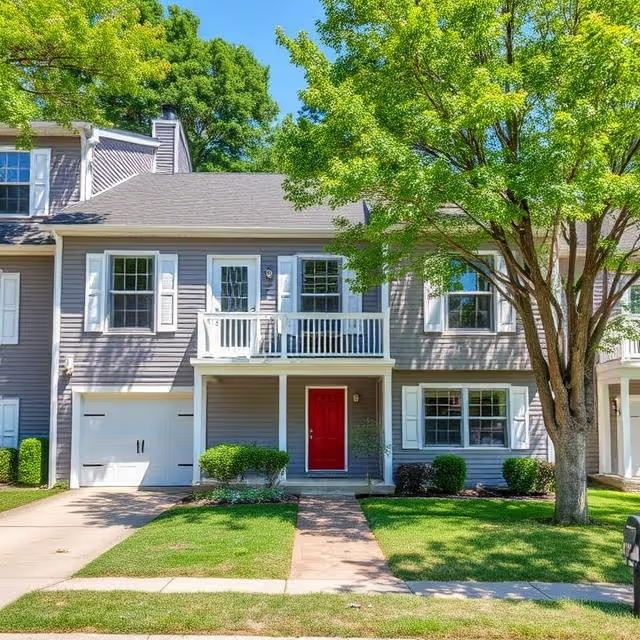Por qué es importante la segmentación semántica en los sistemas de conducción autónoma 🧠
En el mundo de los vehículos autónomos (AV), la percepción lo es todo. Una de las capas fundamentales de la percepción es la segmentación semántica, un proceso en el que a cada píxel de una imagen se le asigna una categoría, como carretera, vehículo, peatón, edificio o vegetación.
A diferencia de la detección de objetos, que ofrece cuadros delimitadores, la segmentación semántica proporciona una comprensión más rica y a nivel de píxeles de la escena. Esto es crucial para:
- Seguimiento de carril y detección de bordes de carretera
- Evitar obstáculos en entornos desordenados
- Navegación urbana a través de intersecciones complejas
- Planificación precisa de la trayectoria
Un conjunto de datos bien etiquetado se correlaciona directamente con una toma de decisiones más segura por parte del AV. Una segmentación deficiente puede marcar la diferencia entre que un automóvil reconozca una acera o la confunda con una carretera transitable.
Para obtener una descripción general de cómo encaja la segmentación en la pila AV, consulte este resumen de la investigación del MIT CSAIL.
Entre bastidores: por qué anotar carreteras no es tan sencillo
Puede parecer fácil decirle a una máquina: «Este es el camino y ese es un árbol». Pero en la práctica, definir esos límites píxel por píxel presenta una serie de dificultades únicas.
He aquí por qué la segmentación semántica de los vehículos autónomos es un desafío único:
Ambigüedad visual y clases complejas
- Superficies mezcladas: Las carreteras se convierten en arcenes, caminos de grava o carriles para bicicletas sin límites claros.
- Bordes borrosos: ¿Dónde termina exactamente una acera y comienza un camino de entrada? Los humanos pueden inferir esto a partir del contexto; las máquinas necesitan definiciones exactas.
- Elementos multicapa: La superposición de elementos, como las marcas viales, las manchas de aceite o las sombras, complica la anotación.
Variabilidad ambiental 🌦️
Los vehículos autónomos deben conducir en todas las condiciones, no solo en días despejados y soleados. Los anotadores (y los modelos entrenados en su trabajo) deben enfrentarse a:
- Nieve, lluvia, niebla y sombras
- Iluminación nocturna y deslumbramiento de los faros
- Cambios estacionales que afectan la vegetación o la textura de las carreteras
El mismo tramo de carretera puede tener un aspecto completamente diferente de un cuadro a otro.
Entornos urbanos dinámicos
Conducir en la ciudad plantea desafíos de anotación que los entornos rurales a menudo no presentan:
- Zonas de construcción: Los carriles, conos o barreras temporales introducen clases irregulares
- Tráfico mixto: Bicicletas, patinetes y peatones en el espacio vial
- Superficies reflectantes: Los edificios de cristal y las carreteras mojadas introducen señales engañosas
Un esquema de anotación estática rara vez cubre todos los escenarios, a menos que se actualice continuamente.
Explosión de clases y deriva de etiquetas: el problema oculto de la calidad de los datos
Cuando la «carretera» no es solo una cosa
En un mundo ideal, cada píxel etiquetado como «carretera» sería coherente en todo el conjunto de datos. Sin embargo, en la práctica, con frecuencia vemos:
- Subclases superpuestas como:
- Carretera asfaltada
- Marcas pintadas
- Carretera de construcción temporal
- Caminos de ladrillo
Los anotadores pueden variar en la forma en que los interpretan, especialmente sin una ontología sólida como una roca. Con el tiempo, estas inconsistencias pueden provocar deriva de la etiqueta—donde el mismo objeto se etiqueta de forma diferente según quién lo haya anotado o cuándo.
La trampa de la taxonomía
Intentar cubrir todos los casos extremos ampliando la taxonomía de las etiquetas es tentador. Pero esto a menudo lleva a:
- Clases excesivamente granulares (p. ej., «bordillo ligeramente dañado»)
- Uso incoherente entre los anotadores
- Escasa representación de clases, que perjudica la generalización del modelo
Un enfoque más eficaz es un ontología cuidadosamente recortada, con pautas visuales y ejemplos claros. Esto permite un etiquetado de alta calidad sin sacrificar el rendimiento del modelo.
Para profundizar en la creación de taxonomías de etiquetas, consulta esto Documento de Stanford sobre la comprensión de los conjuntos de datos de escenas.
El sesgo geográfico en los conjuntos de datos de carreteras: un asesino silencioso de la generalización 🌍
Entrenar un modelo en una sola región (por ejemplo, las carreteras de EE. UU.) puede funcionar bien para la conducción local, pero se derrumba cuando se implementa en otro lugar.
Así es como se filtra el sesgo geográfico:
- Los estilos de señalización difieren (rotondas europeas frente a paradas de 4 vías en EE. UU.)
- Coloración y material de carreteras variar (asfalto, hormigón, piedra)
- Anchos de aceras, límites de vegetación, y comportamientos de conducción todos cambian sutilmente
Para crear sistemas de percepción AV sólidos, los datos de segmentación deben incluir diversidad global—desde las densas intersecciones de Tokio hasta las carreteras rurales de Kenia.
El Mapilar es un gran ejemplo de la diversidad de varios países en las escenas de carretera.
El cuello de botella de la anotación: velocidad frente a precisión
La anotación de imagen de alta resolución a nivel de píxel es increíblemente lento:
- La anotación manual de un solo marco urbano puede requerir Más de 30 minutos
- Cada marco puede incluir docenas de clases de etiquetas
- Los conjuntos de datos del mundo real suelen incluir decenas de miles de marcos
Para hacer frente a esto, las empresas suelen enfrentarse a una disyuntiva:
Herramientas semiautomatizadas Speed Priority 🏃 Accuracy Priority 🧐 Capas de control de calidad manualesMenor costo por cuadro Mayor confiabilidad del modelo de riesgos Alucinaciones Mejor generalización del modelo
Algunos usan un modelo híbrido, donde el etiquetado inicial se realiza con modelos de IA débiles y luego los humanos lo refinan.
Para ver ejemplos de oleoductos híbridos exitosos, consulte Escale la IA y Caja de etiquetasde flujos de trabajo.
El problema del desequilibrio de clases y los casos raros
En la mayoría de los conjuntos de datos de segmentación de carreteras, encontrará una división de 80/20:
- Clases dominantes: carretera, coche, edificio
- Clases menores: ciclista, barrera de construcción, animal
La capacitación con datos tan desequilibrados conduce a un rendimiento deficiente del modelo en casos extremos poco frecuentes pero críticos, como un niño que cruza detrás de una camioneta estacionada.
Soluciones para abordar el desequilibrio de clases:
- Muestreo balanceado por clases durante el entrenamiento
- Sobremuestreo marcos subrepresentados
- Ajuste de la función de pérdida (p. ej., pérdida focal o pérdida de dados)
Y por supuesto: minando activamente casos extremos desde registros e incidentes de conducción del mundo real hasta enriquecer los datos de entrenamiento.
Garantía de calidad: más allá de la precisión de los píxeles
La mayoría de las métricas de control de calidad en la segmentación semántica se centran en IoU (intersección sobre la unión) o precisión media de píxeles. Pero esos no siempre capturan coherencia de escena.
Por ejemplo:
- Un modelo podría perfectamente segmentar la carretera, pero etiquetar la acera como acera.
- Pequeños errores de clasificación en los bordes de los carriles pueden causar desviación de trayectoria.
El control de calidad avanzado debe incluir:
- Comprobaciones de nitidez de los límites
- Comprobaciones de coherencia temporal (en todos los fotogramas de vídeo)
- Inspección visual humano-in-the-loop de casos de fallo
Empresas como Profundice la IA y Afectiva ofrecen herramientas de control de calidad visual específicas para los flujos de trabajo de anotación audiovisual.
Tendencias emergentes en la segmentación semántica para vehículos autónomos
Aprendizaje autosupervisado
Para reducir la carga de la anotación manual, algunas empresas audiovisuales están invirtiendo en aprendizaje autosupervisado, donde los modelos aprenden a segmentar escenas a partir de vídeos sin procesar y sin etiquetar aprovechando la coherencia espacial y temporal.
Por ejemplo, la investigación interna de Waymo incluye métodos para generación de pseudoetiquetas utilizando fusión lidar y multicámara.
Colección de casos Edge basados en simulación
En lugar de esperar a que aparezcan eventos poco comunes en las imágenes de conducción natural, los equipos simulándolos en entornos virtuales.
Herramientas como CARLA y las de NVIDIA Drive SIM permitir a los usuarios:
- Genere máscaras de segmentación perfectamente etiquetadas
- Controle la iluminación, el clima y el comportamiento de los agentes
- Escale rápidamente la generación de conjuntos de datos
Esto es particularmente valioso para probar la solidez de la segmentación en condiciones poco frecuentes (p. ej., deslumbramiento solar, oclusión repentina).
Conjuntos de datos y puntos de referencia clave de la industria 🧪
Para quienes crean o evalúan modelos de segmentación semántica para vehículos autónomos, estos son algunos conjuntos de datos estándar del sector que vale la pena explorar:
- Paisajes urbanos: Centrado en escenas callejeras urbanas de Alemania; precisión de píxeles con una gran variedad de clases.
- BDD100K: De la Universidad de California en Berkeley, cuenta con 100 000 cuadros con una combinación de escenarios de conducción, condiciones meteorológicas y etiquetas de clase.
- Vistas mapilares: conjunto de datos distribuido a nivel mundial con imágenes de alta resolución a pie de calle.
- Paisaje de Apolo: conjunto de datos de conducción chinos con alta densidad de clases y trazados de carreteras del mundo real.
- Escenas nuestas: Un conjunto de datos completo de un conjunto de sensores (Lidar y vídeo) para canalizaciones holísticas de formación audiovisual.
El uso combinado de estos conjuntos de datos ayuda a equilibrar sesgo geográfico, condiciones ambientales, y densidad de clases de objetos.
Dónde van mal las cosas: historias reales sobre el terreno
Incluso las empresas audiovisuales de primer nivel se han topado con dificultades debido a errores de segmentación. Algunos ejemplos notables:
- Phantom Road Lanes: Un sistema AV entrenado principalmente en asfalto seco malinterpretó las marcas de los carriles en una carretera cubierta de nieve y se estrelló contra el tráfico que venía en sentido contrario durante las pruebas.
- Bordillos invisibles: Una acera clasificada erróneamente como espacio para conducir llevó al vehículo a subir a la acera en un escenario de carretera mojada y con poca luz.
- Confusión en la construcción: Las barreras de plástico temporales estaban mal etiquetadas como peatones, lo que provocó que el automóvil frenara inesperadamente e interrumpiera el flujo del tráfico.
Cada uno de estos problemas se remonta a anotaciones de entrenamiento débiles o inconsistentes—demostrar que la calidad de las anotaciones no es un problema administrativo, sino un componente de misión crítica.
Hacerlo bien desde el principio 💡
Si estás creando conjuntos de datos de segmentación semántica para la conducción autónoma, estas son las mejores prácticas para mantenerte en el camino correcto:
- Defina una taxonomía visual ajustada: Evite diseñar demasiado su lista de clases.
- Todos los documentos: Desde las pautas de etiquetado hasta los ejemplos visuales.
- Entrena a los anotadores como cirujanos: La precisión de los píxeles es importante: no escatime en el entrenamiento.
- Mezcla entornos: Los modelos de segmentación urbana, rural, nocturna y de nieve adoran la diversidad.
- Invierta pronto en control de calidad: Corregir las anotaciones incorrectas al final del proceso es costoso.
- Aproveche la simulación y los datos sintéticos: No reemplaza los datos del mundo real, pero llena los vacíos y los casos extremos a la perfección.
- Cierra el círculo: Utilice los errores del modelo para refinar su próxima ronda de etiquetado de datos.
Mantengamos el camino despejado 🛣️
La conducción autónoma no puede tener éxito sin una comprensión fiable y perfecta de la escena. Y esa comprensión comienza con tú—los equipos que crean los conjuntos de datos, definen las taxonomías, aseguran el control de calidad de las etiquetas y repiten sin descanso.
Ya sea que forme parte de una empresa emergente de inteligencia artificial, un proveedor de etiquetas o el equipo de percepción de una empresa audiovisual, la calidad de las anotaciones no se centra solo en «mejores modelos». Se trata de seguridad, escalabilidad e impacto en el mundo real.
👉 ¿Necesitas ayuda para Scale AiR la segmentación semántica para tu proyecto audiovisual? En Laboratorio de datos, nos especializamos en servicios de anotación de alta calidad diseñados para casos de uso de percepción complejos. Hablemos de cómo podemos acelerar su camino hacia una autonomía más segura.
📌 Related: Anotación de imagen para vehículos autónomos: una guía para principiantes
📬 ¿Tienes preguntas o proyectos en mente? Laboratorio de datos





